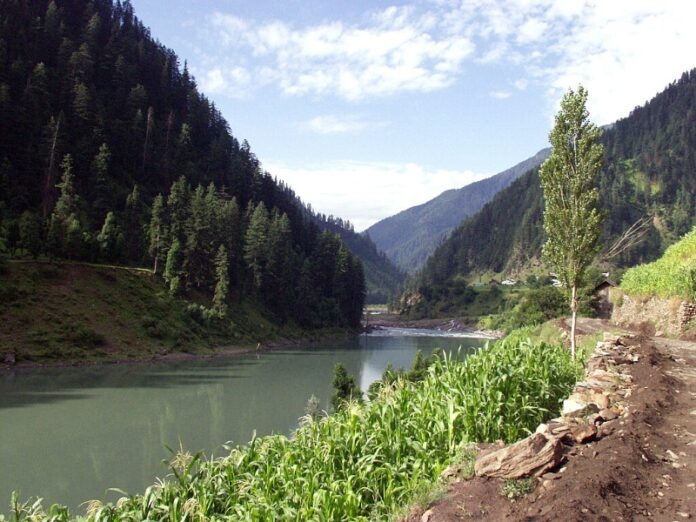The Jhelum River, Pakistan, is an important source of water for Punjab and Azad Jammu & Kashmir (AJK). Its flow varies with seasons and the management of upstream dams. Recent events raised concerns, but flows are now stabilising.
The River System and Mangla Dam
The Jhelum river originates in the Himalayas. It runs through Indian-administered Kashmir before it enters Pakistan. The river is important for agriculture and hydropower. Mangla Dam is located on the river in AJK. It is a giant earth-filled dam that retains water during wet seasons, such as monsoons or spring snowmelt. The authorities release this water in dry seasons, primarily for irrigation canals of Punjab. The dam also produces considerable electricity.
Recent Water Level Surge
Late April 2025 saw water levels in the Jhelum suddenly increase close to Muzaffarabad. The rise created alarm among local communities. This occurred at the time of heightened political tensions following India’s suspension of the Indus Waters Treaty (IWT). People were concerned about unannounced water releases by Indian upstream projects, such as the Kishanganga dam. There were reports that this had happened.
Official Explanations and Data
But Pakistan flood forecasting authorities presented a different picture. They explained that flows are usually higher from April to June. Snowmelt in the catchment of the river results in increased flows. Officials explained that the water levels recorded, although higher, were still below the official “low flood” level of the Jhelum at Mangla.
Read More: Blocking Pakistan’s Water will be Considered an Act of War: NSC
Managed Flows and Normalisation
The Indus River System Authority (IRSA) monitors water inflow and outflow at Mangla Dam on a daily basis. After the phase of increased inflow (about 47,100 cusecs in late April), IRSA regulated the outflows. Controlled releases (e.g., 32,000 cusecs) from Mangla were reported. This regulation balances downstream irrigation requirements, dam safety, and flood control. Although surges upstream of the dam can concern local communities, the operation of the dam tends to normalise flows further downstream. This keeps river levels in line with seasonal requirements. Proper management by WAPDA and IRSA remains essential for the region.
Stay tuned to Brandsynario for latest news and updates









































